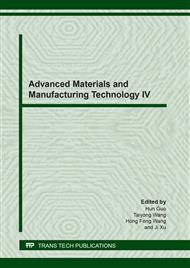p.82
p.96
p.104
p.115
p.125
p.135
p.143
p.152
p.161
Research on Subsurface Damage of Lapping Sapphire with Diamond Fixed Abrasive
Abstract:
The depth of surface/subsurface damage layer is the key index of surface quality of sapphire. In this paper, that depth model of the surface/subsurface damage lay characterized by the crack length was established according to the mechanical theory of indentation fracture. The cutting relation between abrasive and workpiece and the difference of the depth of subsurface damage crack are analyzed. It is preliminarily estimated that the length of sub-surface damage crack of free abrasive sapphire is about 2.46 times that of fixed abrasive when considering only the contact hardness of abrasive grain under static load. Diamond abrasives with size of W20 were adopted to carry out experiments in free and fixed lapping methods. The results show that the surface/subsurface damage depth is 9.87μm and 3.63μm respectively. It is easier to obtain good sub-surface quality by using the fixed abrasive method than free abrasive at the same particle size.
Info:
Periodical:
Pages:
143-151
Citation:
Online since:
October 2020
Authors:
Keywords:
Price:
Сopyright:
© 2020 Trans Tech Publications Ltd. All Rights Reserved
Share:
Citation:


